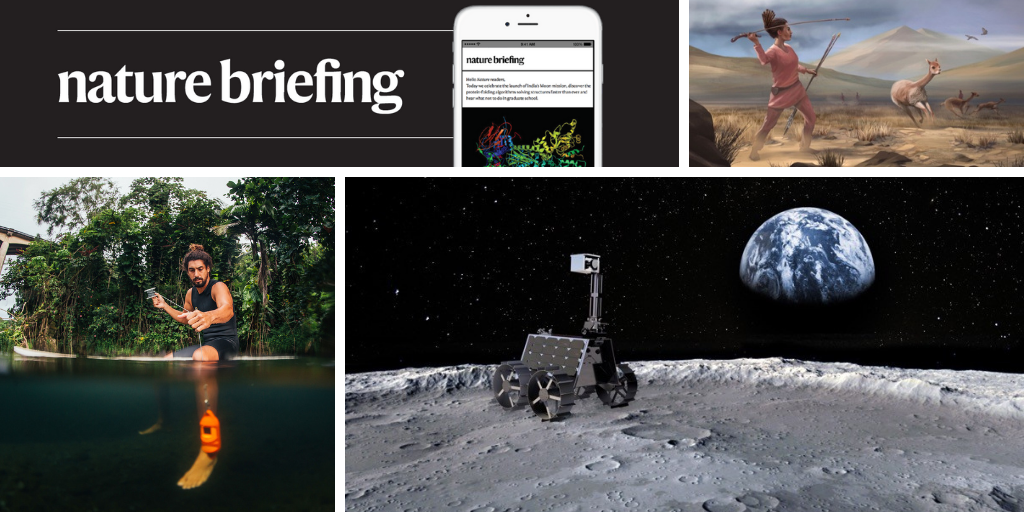Hello Nature readers, would you like to get this Briefing in your inbox free every day? Sign up here
With its orbiter Hope on its way to Mars, the United Arab Emirates has now set its sights on the Moon: the nation plans to launch a compact rover named Rashid in 2024. If it is successful, the UAE would become only the fifth country to succeed in placing a craft on the Moon's surface, and the first in the Arab world. The mission is another signal of the UAE’s extraordinary science and engineering ambition: its Space Agency is just six years old, and the country awarded its first-ever PhD just ten years ago.
The remains of an ancient female hunter shed light on the women who were hunting big game in Neolithic times. After researchers discovered that a 9,000-year-old individual buried in the Andes with an impressive toolkit was actually a woman, they then re-examined reports of other ancient burials in the Americas. They found another 10 women and 16 men buried with hunting tools. But not everyone is convinced. The presence of tools in a grave doesn’t always mean that the person used them in life, notes anthropologist Robert Kelly — for example, two of the burials with tools were of infants.
Reference: Science Advances paper
A time capsule placed at the North Pole by the crew and passengers of an icebreaker in 2018 was found this week in Ireland. The metal cylinder floated an estimated 3,700 kilometres before being spotted by surfers on the shore in county Donegal. “Everything around is covered by ice,” said one of the letters in the capsule. “We think that by the time this letter will be found there is no more ice in Arctic unfortunately.”
Features & opinion
The evidence is building that hyper-magnetized stars called magnetars are the source of at least some fast radio bursts (FRBs) — powerful cosmic flashes that flare for just milliseconds. The origin of FRBs is one of astronomy’s biggest puzzles. “For a long period of time there were more fast-radio-burst theories than there were fast radio bursts,” astronomer Christopher Bochenek tells the Nature Podcast. Now simultaneous observations by radio telescopes in Canada, the United States and China spotted an FRB coming from a magnetar in our own galaxy. Other FRBs have been tracked back to their host galaxies, but the source of an FRB hasn’t been pinpointed before.
And don’t miss our new three-part podcast series, ‘Stick to the science’: when science gets political. It looks at the history of the knotty relationship between science, politics and power, what it means for the objective ideals of science, and the danger of politicization in an increasingly divisive political landscape.
Nature Podcast | 34 min listen
Subscribe to the Nature Podcast on Apple Podcasts, Google Podcasts or Spotify.
The short science-fiction stories in Nature’s Futures series often offer a way of reconsidering the day’s most pressing scientific issues. In the case of this week’s story, ‘Dreaming in 4n Londons’, author S. R. Algernon considers how outbreaks and politics sometimes drive us apart. And how “sometimes, if we are lucky, our dreams, our hopes, and our visions of the future can transcend physical and social distance to bring us together”.
Andrew Robinson’s pick of the top five science books to read this week includes a deep-dive into ignorance, the man behind the Rubik’s Cube and a controversial theory of life.
Where I work
Analytical chemist and avid surfer Cliff Kapono takes to his board to study the health of coral reefs off the coast of Hawaii. (Nature | 3 min read)





